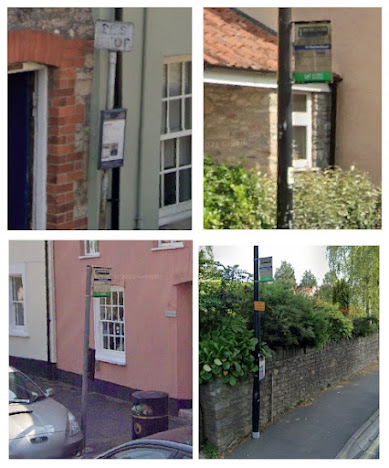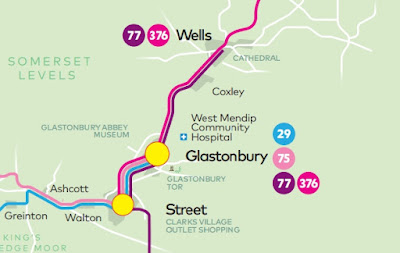Forgot Again - Puzzle Picture
It is thr back of a bus! Specifically it is a computer-created graphic of the back of a bus. fbb had assembled a few pictures of the real live version on line, but yesterday found this superb video. No more need be said!Just in case you cannot quite believe your eyes, here is a 'still' of one grazing peacefully in the evening glow of a Parisian boulevard.Zut alors!
A couple of months later, the creator of the above video was called to a classic vehicle show, not just cars ...... and, deivered to the show on a low loader ...... was the last surviving example of the most bonkers bus ever made!It lacks most of its glass but is, slowly, being restored. It does run! Look on YouTube and you can find a second video of this later visit. Worth a search?
Bay : Watch Bendy Bus Bay Car
Operated firstly on the streets of Sheffield (of course), articulated buses fell quickly out of favour in the UK. Boris (then Mayor Of London) nailed the coffin lid down by persuading folk that they were dangerous, especially to cyclists.
Of course, this was unsubstantiated tosh, but the cycle lobby won the PR day.Cardiff's Bay Car is now conventional vehicles ...... but at least one of he originals is preserved.
Newly Appearing At Newton AycliffeThose that know about these things report that the 810 has a slightly more pointed nose han the other 800s.
The Class 810 is an evolution of the Class 802 units Hitachi have delivered to a number of British train operators. The major change is a 2-metre (6 ft 7 in) reduction in the length of each vehicle, which is required in order to allow paired (10-car) Class 810 trains to use London St Pancras station. Some of the length reduction has been achieved by re-profiling the front end of the train and shortening the nosecone.
So more pointed or just different?
Compared to Class 802 units the 810s will also be fitted with an additional diesel power pack, a total of fou, and each engine will be uprated from 700 to 735 kilowatts (939 to 986 hp). Both of these changes are intended to satisfy the franchise requirement that the new trains equal or exceed the performance of the current Class 222 units.
The "power packs" will generate electricity for the motors, to allow operation away from the wires, due to the short-sighted decision NOT to electrify all the way to Sheffield. This crackpot decision will increase building and running costs and decrease the efficiency of the train as a whole. And, surprise surprise, there will be nasty diesel emissions to contend with.
Well done DaFT, yet again!
Steve Salmon (who used to be something important at the Confederation of Passenger Transport) twittered this picture of a truly stunning, nay desire creating, bus stop flag in Wells, Somerset.There are three other stops on St Thomas Street. They are similarly superb example of route equipment designed to show positive encouragement to potential passengers. Here are all four together, to inspire us and to help build buses back better.St Thomas Street becomes Bath Road ...
... and is the route of service 173 ...... a once an hour part of the Mendip Explorer brand.It is good to see route branding used to the full ...For the ecclesiastically minded, St Andrew (street map above) is significant.
Wells St Andrew, or St Andrew Liberty, or derivations thereof, was a liberty, ecclesiastical parish, and later a civil parish, containing Wells Cathedral (which is dedicated to Saint Andrew) and surrounding land, in Somerset, England.
What a feast of eclectic information is brought to you by this blog!
And please note that the 173 and 174 do not even get a "note" at Wells on the Buses of Somerset network map.
But, reciprocally, the Buses of Somerset routes are ignored by the Mendip Explorer map.
Obviously that is because two different companies run into Wells. They are First Bus West of England (173 and 174) and fbb cannot quite remember who owns Buses of Somerset - BoS. (77 and 176). But never mind, the 176 ...... appears on the BoS map but gets no mention in the BoS timetable book.
Superb publicity. eh?
Powerful Image!
Next Variety blog ; Sunday 11th September





















Buses of Somerset is owned by First also. First SW.
ReplyDeleteI suspect FBB was being sarcastic in this instance
DeleteThe routes are something to do with the West of England mayor, whose area appears to include part of the current county of Somerset as far as buses are concerned.
ReplyDeleteThe BoS routes 29 and 75 used to go to Wells. The map simply indicates the main route from Street and Glastonbury to Wells is the 376. Publishing details of other companies services is simply likely to go out of date unnoticed.
ReplyDeleteJust because two companies are owned by the same parent, doesn't mean they know or keep up with the details of each others operations.